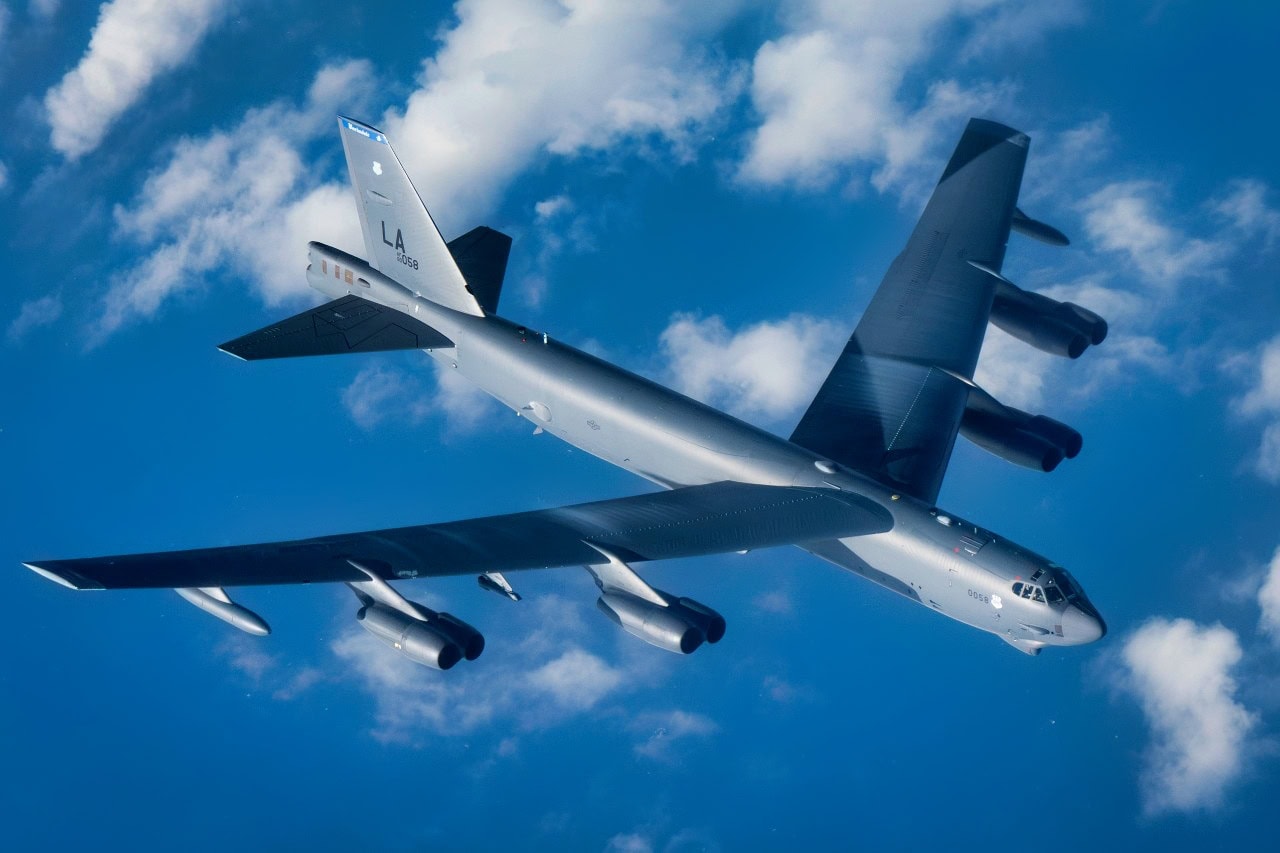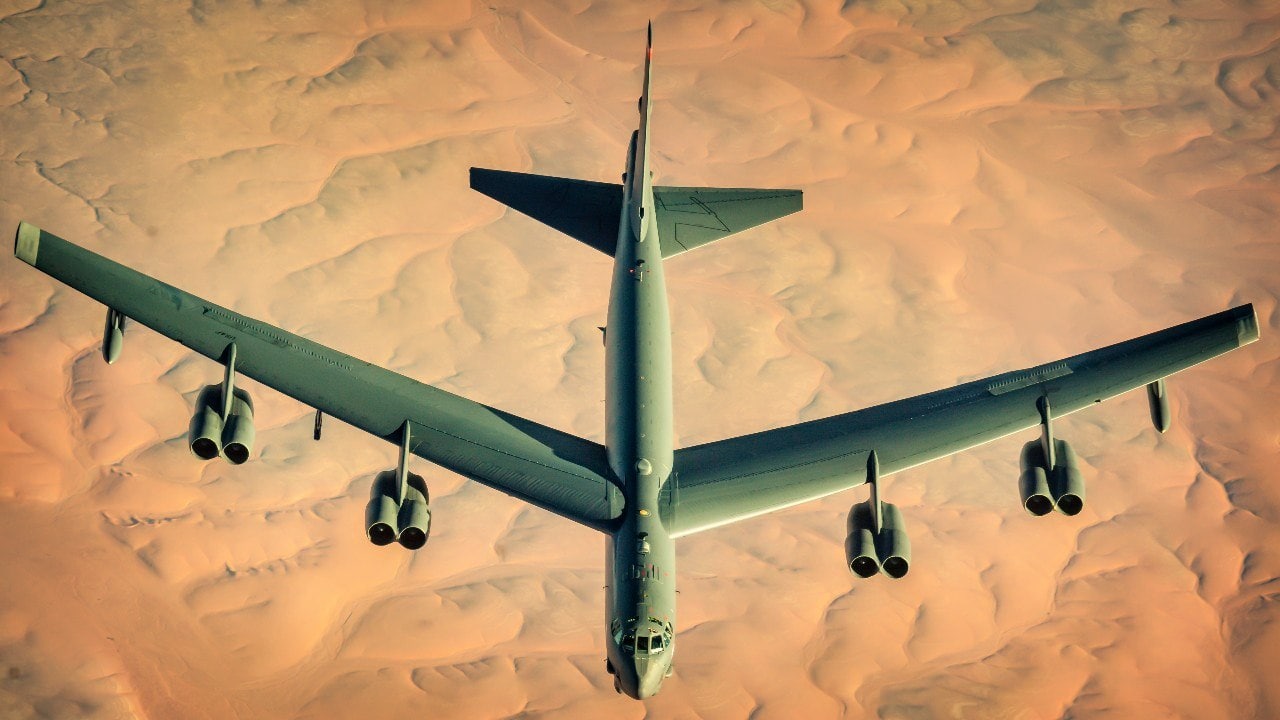The classic US Air Force B-52 bomber may have blasted onto the scene in the 1960s as a “carpet bombing” air “truck” designed to suppress enemy defenses, use unguided munitions, and enable ground forces to maneuver with protective air support.
During the Vietnam War, identified concentrations of enemy troops were targeted by “blanket” bomb area attacks upon their positions, something which proved effective in a tactical sense, and ground infantry moved too close to an enemy.
Today’s B-52, however, 50 years later, is an almost entirely different aircraft capable of firing long-range precision-guided bombs, networking from the air with other attack assets, and operating as a massive ‘bomb truck” able to bring volumes of ordnance in support of air campaigns.
In the future, the B-52 is expected to launch drone fleets from the air, firing hypersonics and traveling with laser weapons.
B-52 Bomber Upgrades
Many have likely heard about the famous re-engining of the B-52 in recent years, a longstanding effort that is replacing the 1960s-era TF33 Pratt & Whitney engines with new, more fuel-efficient, reliable, and quieter Rolls-Royce F130 turbofans.
However, there has also been a massive series of extensive and defining B-52 upgrades, which may have lingered somewhat beneath the radar of collective view. These adjustments to the B-52 are far-reaching and have been underway for over a decade.
The most impactful upgrade is a communications and intelligence system enhancement going back more than ten years called CONECT—for Combat Network Communications Technology. This upgrade takes the platform into the digital age by integrating new LCS displays, moving maps, new computing, and the ability to share and receive updated intelligence information while in flight. CONECT, therefore, allows crews to “retarget” a weapon or adjust mission specifics while in flight.
The aircraft has also been modified with a new Internal Weapons Bay capable of massively increasing the scope and volume of weapons it can carry and deliver, which will drive B-52 development into future decades.
Future B-52
The B-52 is also transitioning into new dimensions, as it will take on new missions soon and align new Concepts of Operation for several reasons. Recently, the B-52 has been considered a potential “arsenal plane” able to transport massive volumes of weapons in the air to forward operating attack planes.
The B-52 is also being developed as a drone-launching platform able to launch and recover large numbers of attritable yet tactically relevant drones.
This ability is quite significant in a strategic sense because a modernized B-52 could enable a B-52 to operate as a command and control node in the air capable of blanketing an area with surveillance, networking time-sensitive information, and directing strikes as needed.

A B-52 Stratofortress assigned to the 2nd Bomb Wing, Barksdale Air Force Base, Louisiana, is refueled by a KC-135 Stratotanker assigned to the 6th Air Refueling Wing, MacDill AFB, Florida, within the U.S. Southern Command (SOUTHCOM) area of responsibility, June 18, 2024. The B-52 Stratofortress is a long-range, heavy bomber that can perform a variety of missions. As part of the Air Force Global Strike Command, the B-52 enables combat-ready forces to conduct strategic nuclear deterrence and global strike operations in support of combatant commanders. (U.S. Air Force photo by Senior Airman Lauren Cobin)
The idea would be for the platform to connect with forward operating stealthy manned and unmanned air attack platforms tasked with destroying enemy air defenses and opening up an “air corridor” for less stealthy 4th-generation aircraft and larger bombers to enter enemy air space for attacks.
The B-52 will also likely fire both lasers and hypersonic weapons surging into the future as new technologies enable a new generation of operational possibilities.
Pentagon weapons developers and scientists continue to surge forward with technologies enabling mobile, expeditionary power sources to miniaturize and consolidate sufficient power to fire lasers from air platforms.
This would enable the aircraft to attack at the speed of light with a scalable, low-cost weapon capable of fortifying air attacks.
Yet another critical area of B-52 development relates to the use of hypersonic weapons, something which also changes the paradigm for air attack missions surging into the future.
About the Author: Kris Osborn
Kris Osborn is the Military Technology Editor of 19FortyFive and President of Warrior Maven – Center for Military Modernization. Osborn previously served at the Pentagon as a highly qualified expert in the Office of the Assistant Secretary of the Army—Acquisition, Logistics & Technology. Osborn has also worked as an anchor and on-air military specialist at national TV networks. He has appeared as a guest military expert on Fox News, MSNBC, The Military Channel, and The History Channel. He also has a Masters Degree in Comparative Literature from Columbia University.

